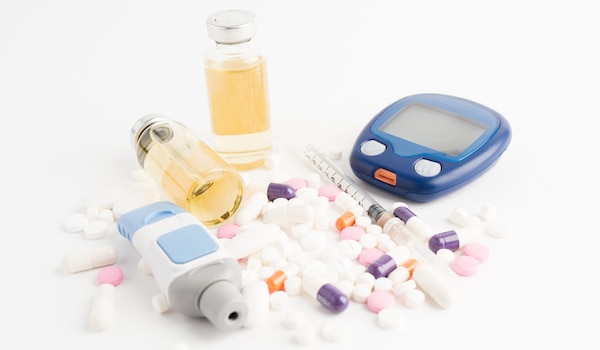How Do Different Type 2 Diabetes Medications Perform in Combination with Metformin?

NIH-funded researchers complete first study comparing commonly used type 2 diabetes medications.
In a direct comparison of four drugs commonly added to the first-line drug, metformin, to treat type 2 diabetes, a large trial found that two of the medications, insulin glargine and liraglutide, each worked better with metformin than did either of the two other Food and Drug Administration (FDA)-approved medications to maintain blood glucose levels in the recommended range.
Launched in 2013, the Glycemia Reduction Approaches in Diabetes: A Comparative Effectiveness (GRADE) Study was conducted at 36 U.S. study centers. It was designed to compare four major medications approved by the FDA at the time GRADE started to treat diabetes in combination with metformin.
The study enrolled 5,047 people with type 2 diabetes from diverse racial and ethnic groups who were already taking metformin. Participants were then randomly placed into one of four treatment groups. Three groups took metformin plus a medicine that increased insulin levels—sitagliptin, liraglutide, or glimepiride. The fourth group took metformin and insulin glargine U-100, a long-acting insulin.
After an average of four years of follow-up, the study found that participants taking metformin plus liraglutide or insulin glargine achieved and maintained their target blood levels for the longest time compared to sitagliptin or glimepiride. This translated into approximately 6 months more time with blood glucose levels in the target range compared with sitagliptin, which was the least effective in maintaining target levels. Treatment effects did not differ based on age, sex, race, or ethnicity.
However, none of the combinations was a slam dunk. Although average blood sugar levels decreased during the study, nearly three quarters of all participants were unable to maintain the blood glucose target over four years, underscoring the difficulty in maintaining recommended targets in many patients with type 2 diabetes.
“With many treatment options available for type 2 diabetes, health care providers and patients can find it difficult to know which drug is best for which person,” said NIDDK Director Dr. Griffin P. Rodgers. “NIDDK stands uniquely poised to support comparative effectiveness trials like GRADE to help providers make evidence-based recommendations that lead to better health for their patients, and for all people living with type 2 diabetes.”
The results of this NIDDK-funded study were published in a pair of papers in the New England Journal of Medicine. For more information about the study, read the full NIH press release.


Comments